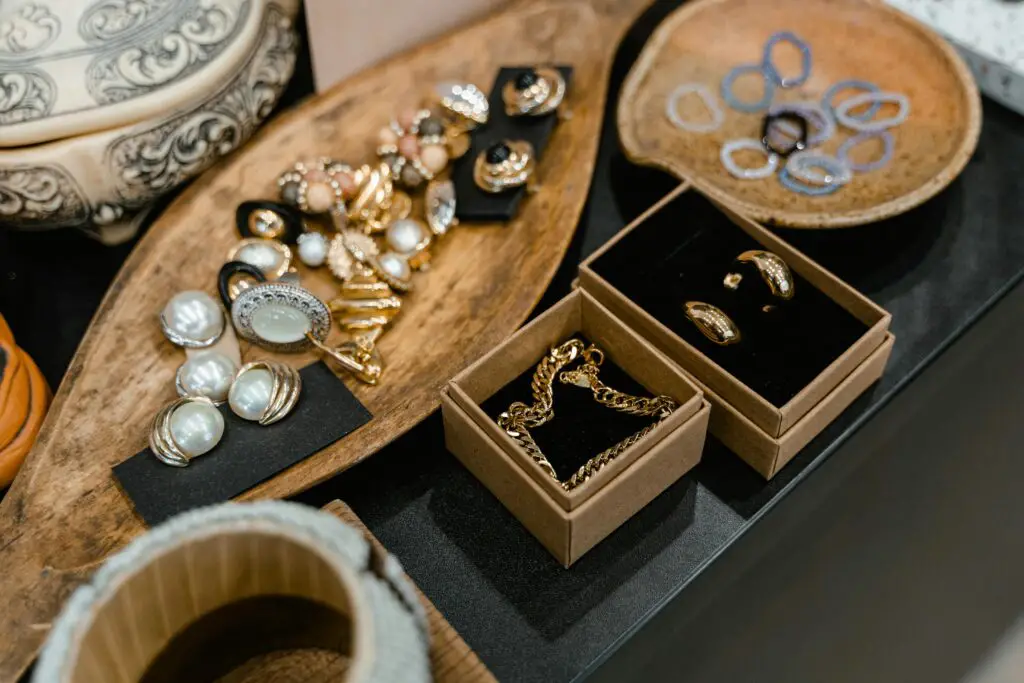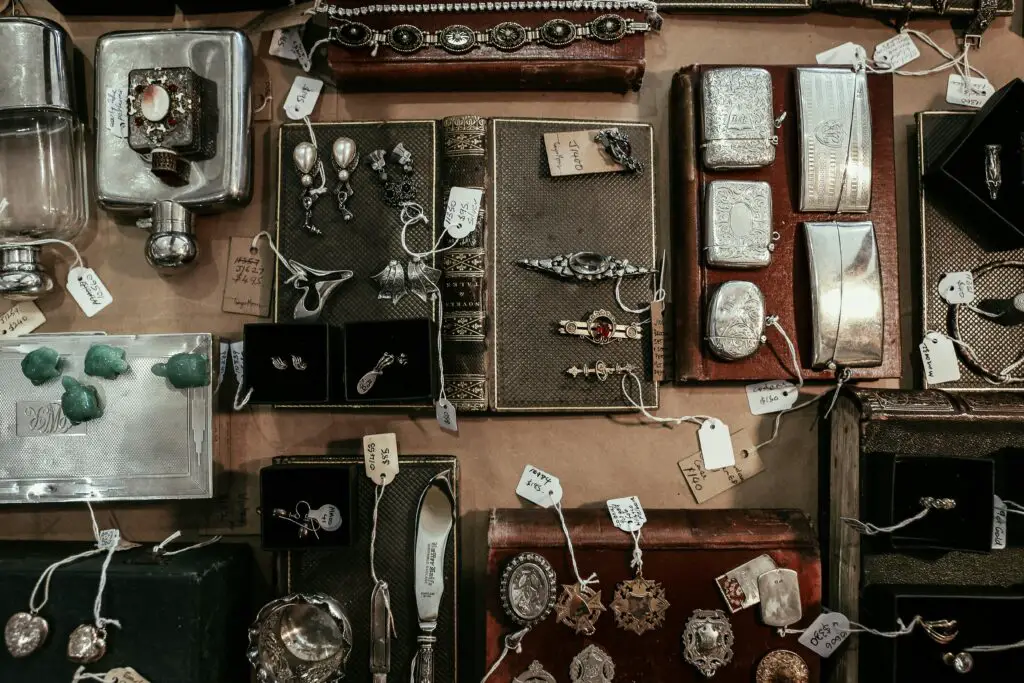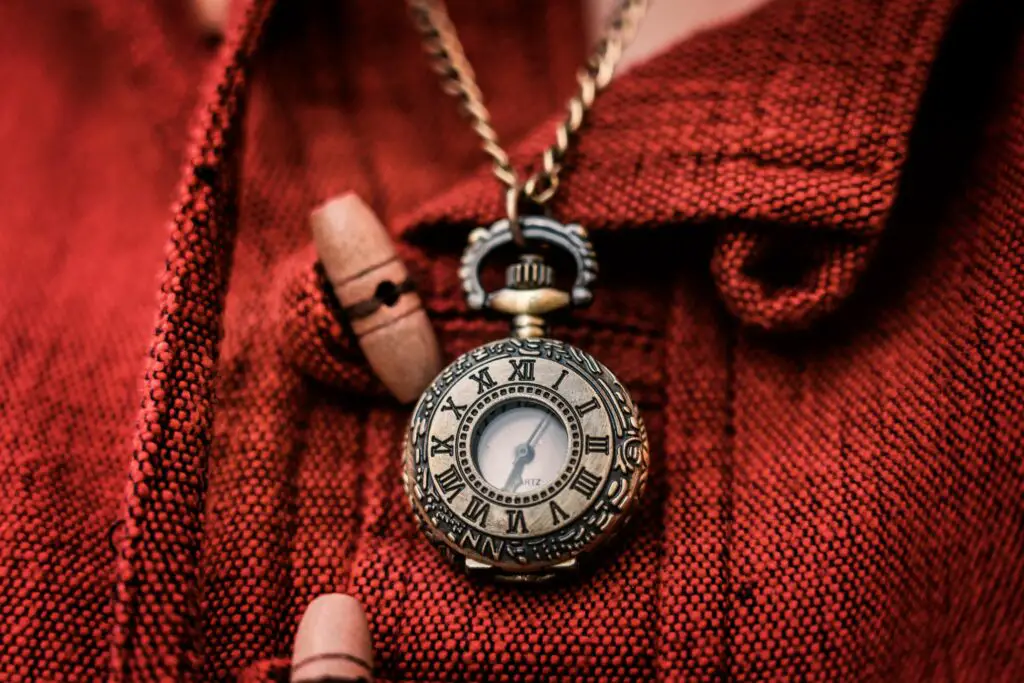1. Check the Hallmarks

Hallmarks are stamped marks on the inside of rings, bracelets, or clasps that indicate the metal’s quality. Genuine vintage jewelry often has clear, easy-to-read hallmarks. If the stamp is blurry or missing entirely, it could be a sign of a fake.
2. Feel the Weight
Real vintage jewelry, especially gold and silver pieces, tends to be heavier than fakes, which are often made from cheaper materials like plastic or thin metal. Pick up the piece and feel its weight—if it feels too light, proceed with caution.
3. Inspect the Craftsmanship
Vintage jewelry is usually handmade, meaning small imperfections are common. If a piece looks overly perfect, uniform, or machine-made, it could be a reproduction. Handmade jewelry has character and slight inconsistencies that make it unique.
4. Look for Prong Settings
Authentic vintage jewelry uses prong settings to hold gemstones in place, whereas modern or fake pieces often use glue. Check closely to see if the stones are glued on—if they are, it’s likely not a genuine vintage piece.
5. Test the Stones
Many vintage pieces feature real gemstones, but some fakes use glass or plastic stones. Tap the stone against your teeth (gently!)—real gems will feel hard, while glass or plastic will feel softer. You can also have the stones tested by a jeweler for peace of mind.
6. Examine the Clasp
Older vintage pieces often have unique or more complicated clasps, like box or barrel clasps. Modern reproductions tend to use simpler, cheaper clasps like spring rings or lobster clasps. Pay attention to the clasp’s style and condition.
7. Learn to Spot Common Reproductions
Certain styles of vintage jewelry, like Art Deco or Victorian pieces, are often reproduced. Familiarize yourself with these popular styles and what genuine examples look like so you can better spot imitations.
8. Check the Back of the Piece
The back of vintage jewelry can reveal a lot. Genuine vintage pieces often have detailed backs, while fakes might have flat or poorly finished backs. Always inspect the back or underside to check for signs of authenticity.
9. Use a Magnet

Many fake pieces are made with cheap metals, which are often magnetic. Bring a small magnet with you when shopping for vintage jewelry—if the piece is attracted to the magnet, it’s likely not real gold or silver.
10. Research the Designer
Some vintage jewelry is designer-made, and the designer’s name can significantly increase the value. If a piece claims to be from a famous brand, do some research. Look up what the maker’s marks should look like and compare them to the item.
11. Beware of Too-Good-to-Be-True Prices
While it’s great to score a deal, extremely low prices can be a red flag. Vintage jewelry, especially with precious metals or real gemstones, has value. If the price seems suspiciously low, it might be too good to be true.
12. Inspect the Patina
Vintage jewelry often has a patina—a soft, aged look on metal surfaces. This happens naturally over time. If a piece looks unnaturally shiny or freshly polished, it could be a reproduction, or someone might be trying to cover up its age.
13. Know the Era’s Styles
Each era has distinctive jewelry styles. For example, Victorian jewelry often features intricate designs and gemstones like garnets or seed pearls. If a piece claims to be from a specific era, make sure the style matches what was popular during that time.
14. Ask for a Jeweler’s Report
If you’re not sure about a piece, ask for a jeweler’s report or appraisal. Many reputable sellers will have this on hand, especially for high-value items. A certified jeweler can verify the age, metal content, and authenticity of the gemstones.
15. Look for Wear on the Metal

Genuine vintage jewelry will show signs of wear, especially around areas that come into frequent contact with skin, like rings or bracelets. Look for subtle signs of use, like slight fading or scratches. Fakes often look too pristine or are artificially aged.
16. Avoid Overly Bright Colors
Fakes often have overly bright, flashy colors, especially in the stones. Vintage jewelry tends to use more muted or natural-looking stones. If the colors seem too vibrant, it could be a sign of a modern reproduction.
17. Trust Your Instincts
At the end of the day, trust your gut. If something feels off about the piece—whether it’s the price, the quality, or the seller’s story—don’t be afraid to walk away. There’s plenty of real vintage jewelry out there, and you’ll find the right piece.
With these tips in mind, you’ll be able to spot fake vintage jewelry like a pro. Happy hunting!


